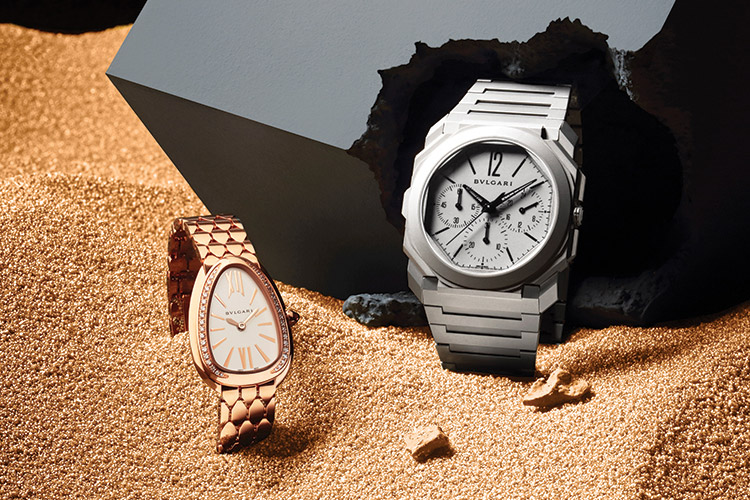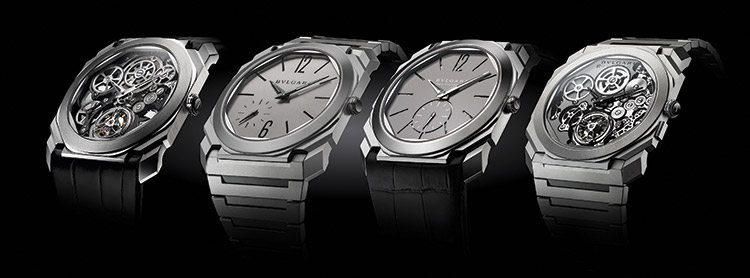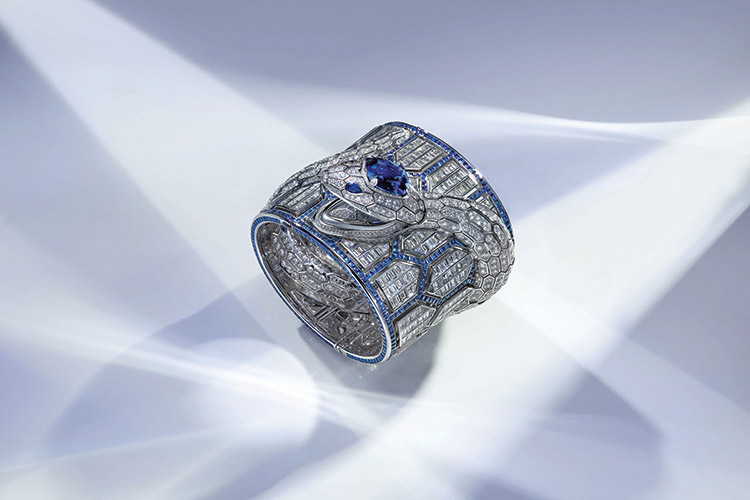
The prestigious Grand Prix d’Horlogerie de Genève (GPHG) has awarded Bvlgari two prizes on November 7, 2019. The Chronograph Watch Prize for the Octo Finissimo Chronograph GMT Automatic, and the Jewellery Watch Prize for Serpenti Misteriosi Romani. Antoine Pin – Watch Business Unit Managing Director, Bvlgari – speaks to us of what this means to the marque
How does it feel to Bvlgari as a brand when it has won the GPHG award for three times in a row?
The first thing that comes through is the encouragement; we, of course, also feel humbled and honoured. What I found really touching was the feeling of encouragement coming from this hall full of people. You actually get to see the reaction of the people to the awards and the brands that won them. When the name Bvlgari was announced, the very gentle words of the jury and the reaction of the people was super-positive. They were very happy that Bvlgari won, and that is a huge recognition. The message we got was that it was well-deserved; it was not only the votes of the jury, but also the votes of the public.
The way we see it, this is a real encouragement to move forward. There is a strong rationale for our award, but there are plenty of comments that go beyond the rationale – the aesthetics, technical achievements, impressions, and so on. I heard a couple of comments about how the decisions are made, and these include comments on how good we are as partners to our suppliers, or how we are always very nice. Besides the prizes, there is a global environment, a positive environment of the watchmaking industry. It is very touching, and there is a sense of pride with it. But for us, it is also “So what is next? How do we surpass ourselves?”
You already have the thinnest chronograph, the thinnest tourbillon, thinnest automatic movement, so what is left?
We can play on cross-function; we can play on different things. We can also push the limits further. It raises the question of how far can we go. If you think about the birth of haute horlogerie, this is exactly the state of mind of someone like Breguet when he created the tourbillon. He was working against the gravitational force; he was an engineer and he was challenging the constraints of gravity. He bought innovation to the world of watchmaking; his clocks and watches are basically the computers of his times. It comes back to the question of how far can we go?
We can draw the parallels in the 21st century between what we have done with the Octo Finissimo, and what has been done with micro-processors and chips. This is similar to Moore’s law that states that you can miniaturise the capacity to process a chip and you can multiply that by 2 to increase the processing capacity every 18 months. This shows how far we can go; it forces us to go back to the philosophy of the founders of modern watchmaking. Have we reached the thinnest, thinnest possibility of the movement? Or can we go even thinner?
Since 2014, Bvlgari has moved from being a ladies’ watchmaker to making men’s watches and becoming a totally in-house manufacture; how difficult has this been?
In the initial stages, we were in the early stages of the watch industry, and perhaps the initial thinking at Bvlgari was to be a little group and manufacture in the high-end segment. Later, the connections between the brand and the little workshops became stronger. This perhaps led to the thinking that we can do a lot for men. The clients are here, and we don’t have much for them except sports’ watches. This is good but we can probably do more. Starting with a collaboration, the workshops ended up doing more and more work for Bvlgari alone; this led to the final integration that has happened over the years. We took some years to move from some expertise in retrograde and so on to building our own manufacture. The moment of truth was the birth of the Octo Finissimo, which was a milestone for the brand and brought us global recognition. This watch stands for the essence of what Bvlgari is, because the design and movement are conceived together.

Bvlgari has been using a lot of new materials, such as sapphire, ceramic, and carbon; does this mean that the brand is more open to new materials?
I think we have always been open to new ideas and materials, such as aluminium 20 years ago; this was very revolutionary at that time. What is different is our background and experience as jewellers. For instance, as jewellers we have created jewellery with china. We have this culture of trying new things; we look at new materials for performance, aesthetics, and so on. And of course, aesthetics goes with functionality always.
Where do you see the Octo and the Serpenti, which is the face of the female watch lines, in the near future?
Even though we are a big brand, we still have lots of territories and customers to convince, and present those two icons to. Our job is to make these collections known and visible to the public. It is a long story; it takes years and years to impose our philosophy and show our difference. I believe our products are strong enough to make an impact, but we need to make sure that they are exposed, they are visible, they are tried on, and their stories are told. Both of these products also push us to move forward, in terms of quality and materials as well. As long as they provide us inspiration to explore further, we have plenty of options to explore in these two lines.

Does it worry you to work on such non-existent margins as when you are working on the thinnest watch, because even a hairline difference can affect reliability and quality?
Yes, it should definitely worry us, because if we don’t then it means we are overly optimistic. When we are talking of R&D and challenges, there are questions of sturdiness, of protecting the movement – to make sure that these movements are able to resist shocks and have the same standards of wearability as other watches.
That means our R&D has to be not only on the movement, but also the case, the techniques of the building the whole watch itself. If we make it thinner, we have to make sure that the case is super-shock absorbing to make sure that there is as little vibration as possible inside the case, and that of course raises more questions. Because it is so thin and comfortable to wear, people may forget that they are wearing it and use it in all conditions, resulting in a lot of stress to the body of the watch. The question is how can we face these constraints over a watch that is essentially a daily-wear watch? But technology has made giant strides; it is beyond all our capacity to imagine the future. For me, this more of science-fiction than anything I thought of 20 years ago.








